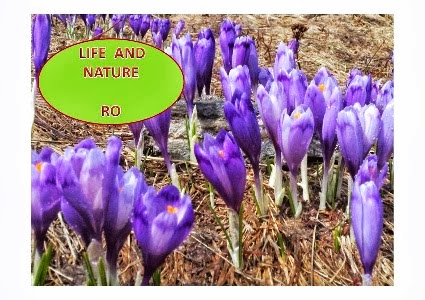And behold, there are only two days left from our journey through the fascinating land of Buzau. Today we will focus on two other attractions from Manzalesti Village, Buzau: Meledic Plateau, a Natura 2000 Site and the White Stone "La Grunj" or "The Grunj" as it is known in the area.
The Meledic Plateau
The Meledic Plateau, located in the commune Manzalesti, is one of the biggest attractions of Buzau, but also a geological, botanical and zoological reserve, and a Community Natura 2000 site. The name of the Plateau, as locals say, comes from the Turkish word "menedic" which means "place of rest." This wonderful "place of rest" is distinguished by the presence of beautiful geological objectives like the Salt karst and Salt caves from Manzalesti, which are unique in Europe (because of its formation, Cave "6S" is considered unique in Europe); the existence of Meledic Lake where you can also find the proudly Lime-tree of an important romanian poet - Alexandru Vlahuţă; numerous freshwater lakes in a salted place (which are a curiosity), but also by the existence of protected species in Buzau County: Euscorpius carpathicus (The Carpathian scorpio), Reticulitermes lucifugus (Termites) and Testudo hermanni (Tortoise). Site specific vegetation is halophilous, the most common species in the area is Sea buckthorn (Hippophae rhamnoides), an important medicinal plant, which nowadays locals are using it in the preparation of teas, jams, syrups and juices.
The Meledic Plateau
The Meledic Plateau, located in the commune Manzalesti, is one of the biggest attractions of Buzau, but also a geological, botanical and zoological reserve, and a Community Natura 2000 site. The name of the Plateau, as locals say, comes from the Turkish word "menedic" which means "place of rest." This wonderful "place of rest" is distinguished by the presence of beautiful geological objectives like the Salt karst and Salt caves from Manzalesti, which are unique in Europe (because of its formation, Cave "6S" is considered unique in Europe); the existence of Meledic Lake where you can also find the proudly Lime-tree of an important romanian poet - Alexandru Vlahuţă; numerous freshwater lakes in a salted place (which are a curiosity), but also by the existence of protected species in Buzau County: Euscorpius carpathicus (The Carpathian scorpio), Reticulitermes lucifugus (Termites) and Testudo hermanni (Tortoise). Site specific vegetation is halophilous, the most common species in the area is Sea buckthorn (Hippophae rhamnoides), an important medicinal plant, which nowadays locals are using it in the preparation of teas, jams, syrups and juices.
The Mountain of Salt, Mânzălești
Foto: Gabriela Iftode
Polyommatus icarus (Common blue)
Foto: Gabriela Iftode
Meledic Lake
Foto: Gabriela Iftode
Iris graminea (Iris Grass Leaved Flag)
Foto: Gabriela Iftode
The White Stone "La Grunj"
Once you have entered a zone of Sub-Carpathians Curvature, in Manzalesti Commune, you can see unbending like a watchman of the past, The White Stone "La Grunj" or "The Grunj" as it is called by locals.
The White Stone is a natural monument, a geological site that occupies an area of 0,025 hectares. It has an irregular shape, made of erosion in many directions and was born in Badenian, consisting of dacitic tuff resulted in cementing flue dusts dacite.
Once you have entered a zone of Sub-Carpathians Curvature, in Manzalesti Commune, you can see unbending like a watchman of the past, The White Stone "La Grunj" or "The Grunj" as it is called by locals.
The White Stone is a natural monument, a geological site that occupies an area of 0,025 hectares. It has an irregular shape, made of erosion in many directions and was born in Badenian, consisting of dacitic tuff resulted in cementing flue dusts dacite.
White Stone La Grunj
Foto: Gabriela Iftode
White Stone La Grunj
Foto: Gabriela Iftode
Gabriela Iftode
15/08/13
To be continued







Niciun comentariu:
Trimiteți un comentariu